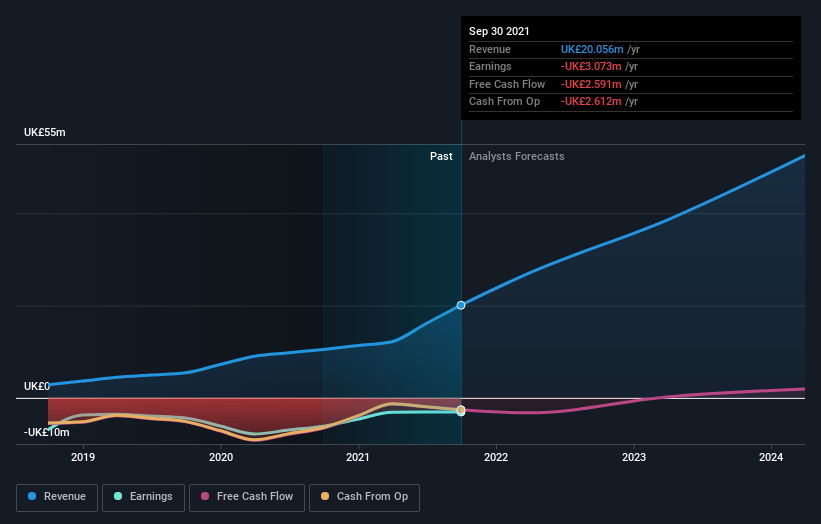Further weakness as Sosandar (LON:SOS) drops 14% this week, taking three-year losses to 14%
Many investors define successful investing as beating the market average over the long term. But if you try your hand at stock picking, your risk returning less than the market. Unfortunately, that's been the case for longer term Sosandar Plc (LON:SOS) shareholders, since the share price is down 14% in the last three years, falling well short of the market decline of around 9.1%. Unfortunately the last month hasn't been any better, with the share price down 27%.
After losing 14% this past week, it's worth investigating the company's fundamentals to see what we can infer from past performance.
View our latest analysis for Sosandar
Given that Sosandar didn't make a profit in the last twelve months, we'll focus on revenue growth to form a quick view of its business development. Generally speaking, companies without profits are expected to grow revenue every year, and at a good clip. That's because it's hard to be confident a company will be sustainable if revenue growth is negligible, and it never makes a profit.
In the last three years, Sosandar saw its revenue grow by 56% per year, compound. That is faster than most pre-profit companies. While its revenue increased, the share price dropped at a rate of 5% per year. That seems like an unlucky result for holders. It's possible that the prior share price assumed unrealistically high future growth. Before considering a purchase, investors should consider how quickly expenses are growing, relative to revenue.
You can see how earnings and revenue have changed over time in the image below (click on the chart to see the exact values).
We're pleased to report that the CEO is remunerated more modestly than most CEOs at similarly capitalized companies. But while CEO remuneration is always worth checking, the really important question is whether the company can grow earnings going forward. This free report showing analyst forecasts should help you form a view on Sosandar
A Different Perspective
While it's never nice to take a loss, Sosandar shareholders can take comfort that their trailing twelve month loss of 1.1% wasn't as bad as the market loss of around -3.8%. The one-year return is also not as bad as the 5% per annum loss investors have suffered over the last three years. It could well be that the business has begun to stabilize, though the recent returns are hardly impressive. While it is well worth considering the different impacts that market conditions can have on the share price, there are other factors that are even more important. Even so, be aware that Sosandar is showing 3 warning signs in our investment analysis , you should know about...
For those who like to find winning investments this free list of growing companies with recent insider purchasing, could be just the ticket.
Please note, the market returns quoted in this article reflect the market weighted average returns of stocks that currently trade on GB exchanges.
Have feedback on this article? Concerned about the content? Get in touch with us directly. Alternatively, email editorial-team (at) simplywallst.com.
This article by Simply Wall St is general in nature. We provide commentary based on historical data and analyst forecasts only using an unbiased methodology and our articles are not intended to be financial advice. It does not constitute a recommendation to buy or sell any stock, and does not take account of your objectives, or your financial situation. We aim to bring you long-term focused analysis driven by fundamental data. Note that our analysis may not factor in the latest price-sensitive company announcements or qualitative material. Simply Wall St has no position in any stocks mentioned.

 Yahoo Finance
Yahoo Finance 
